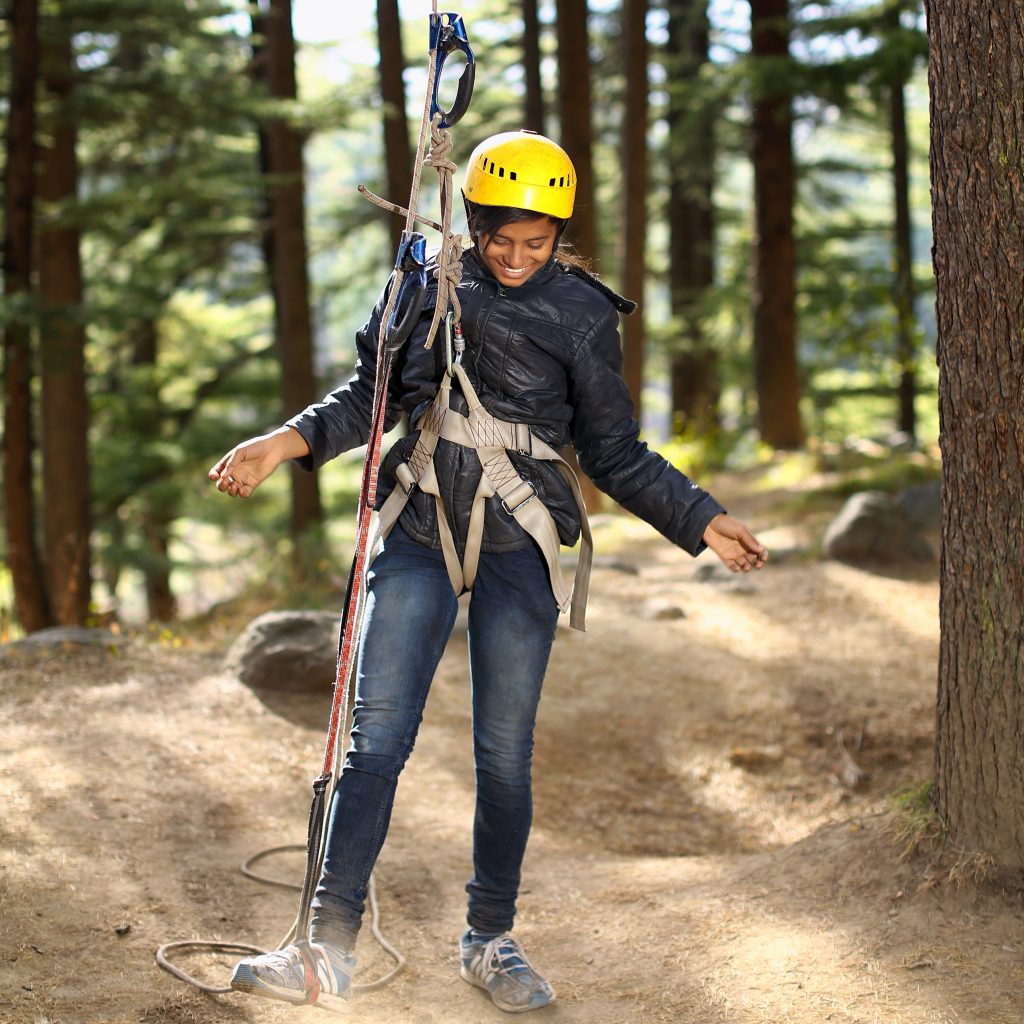Ziplines are fun adventure sports where a person slopes down at whizzing speeds while being attached to a cable. The whole ride is made thrilling by starting from a great height, over a terrain that provides spectacular views while the person zips down. Usually, a zipline hangs from one treetop to another, or over a city from the top of a building to another point near the ground. Many modern stadiums have been using ziplines to move from one end of the stadium to another over the playing area. This has only been implemented in several beautiful stadiums around the world, so we can only hope that this trend comes to our stadium in Melbourne.
Speaking strictly in terms of science, the cable begins from a higher point compared to its ending. The person travels using the natural decline of the cable on a pulley system that reduces friction. This reduction of friction helps the person to accelerate down the zip. As simple as the phenomena may sound, it takes a lot of engineering principles to design it keeping in mind safety. Just imagine, the ziplines must bear people of a big range of weights and accelerate them to speeds of close to 160 kilometres per hour.
The Science
Ziplines are not rocket science. The first step is to attach the zip between two points where the starting point is higher than the ending.
Next, the speed is provided by the pulley. A pulley is a wheel that has a rim that is grooved. This rim is called a sheave and its wheel turns as it travels over the zip. Pulley reduces the friction significantly, thus keeping the speeds high.
Along with these two, the system also has some form of a harness or seat which ties the rider to the pulley.
Of course, you might be wondering how will the rider stop if he/she continually descends down the slope. Usually, there are two types of braking mechanisms. The active braking mechanism provides the control of the brake to the instructor or the rider. The passive braking mechanism is provided in the form of a slight upward slope towards the end of the ride, which slows down the rider and eventually brings them to a stop.
Safety with Zip Lines
Ziplines may sound amateurish because after all it just uses a pulley and a rope, but there is a lot of things that can go wrong with this adventure sport. As a result, there are various international standards and practices that must be complied with to enhance the trust factor with a particular zip – line. Trust a zip – line professional if he/she has accreditation from the Association for Challenge Course Technology or Professional Ropes Course Association. These two organizations have accreditation of the American National Standards Institute in order to develop the industrial level regulations and standards. Australian license standard varies. In Victoria, search for the nearest high ropes course vic on google should you want to be a licensed professional.

In Europe, the ziplines are regulated by The European Ropes Course Association and they also accredit safety courses.
The average maximum weight for anyone zipline rider is around 113 kilograms. If you are wondering, what would happen if the cable breaks midway, well, there is a trick to it.
It is not actually one cable that connects one end to the other but rather they are seven small cables that are wound together. Each of these seven cables is further made of 19 cables wound together. The professionals are expected to inspect the lines on a daily basis to see any signs of wear.
Further regulations and restrictions are provided by limiting the maximum and minimum height and weight for the cable rider. Helmets are mandatory and there is a specific dress – code to be followed while doing the zipline.
Benefits of Zip Lining
Needless to say, the adrenaline you get from zip lining is unlike many other. It gives you a sense of security and keep your heart jumping at the same time. The adrenaline rush you get actually boosts energy, increases strength and decreases pain sensitivity for a certain duration. This adrenaline rush might also inspire you to do other adventurous activities that you have thought to be challenging.
In fact, participating in a zip line or a ropes course has been known to help someone to get over their fear of height. This could be the first step if you are aiming towards doing a bungee jump but have a fear of height.
One last benefit of zip lining that I would like to talk about is the memories that is left behind from the experience. Doing adventurous activities like this have been known to foster bond and improve relationships, so whoever you did it with will always have a special part for you in their hearts. And of course, it goes both ways. Imagine doing a zip line above the Docklands stadium in Melbourne with your loved ones! Of course, this has yet to be implemented, but who knows?
